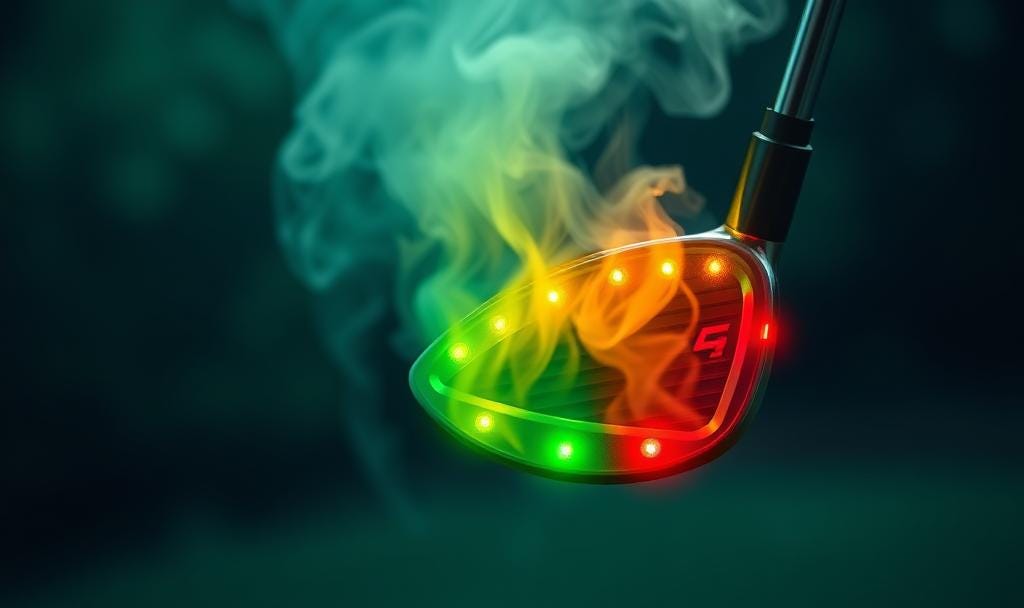Glover Raises The Stakes
If true that some players are knowingly skirting driver testing rules, then cumbersome tests for all players at major championships may become necessary.
Asked during his SiriusXM show about driver test failures at the PGA Championship, Lucas Glover suggested that some of his brethren knowingly skirt the Rules of Golf.
“I’ve been trying to think all morning and all day how to say this without sounding like it’s going to sound – but most guys don’t give them their real driver anyway,” Glover said. “They give them their backup just in case.”
He added, “I know a lot of guys, they keep two drivers in their bag just in case.”
Which was a diplomatic way of saying they are cheating, without saying they are cheating. But are these players doing it from a place of unsportsmanlike duplicity? Or just trying to keep up with the distance chase that their “teams” and craven marketeers tell them is essential to financial success in pro golf? Either way, the revelation hurts the image of a sport that has long taken pride in the integrity of its vast majority of self-policing players.
The random “Characteristic Time” driver tests at the heart of this dust-up have been conducted for years now. They happen throughout the PGA Tour season, at major championships, and on other global tours. Prior to year’s PGA Championship, it is believed multiple drivers were deemed non-conforming or close to the line and subsequently taken out of play before round one. The two top-ranked players in the field, Scottie Scheffler and Rory McIlroy, had to switch.
Scheffler revealed after winning that he was aware his driver was trending in the direction of non-conformity. McIlroy did not address a SiriusXM report by Jason Sobel suggesting the Masters champion had to make a switch after his was deemed non-conforming. Both players use a TaylorMade. But at least neither player attempted the backup ploy alleged by Glover.
Majors are theoretically the best place to check all drivers since the weeks include golfers from other Tours, where testing is less robust or non-existent. (LIV has been in discussions about testing with the USGA and R&A as part of newfound efforts with an eye on obtaining world ranking points and legitimacy.)
“If we’re going be on an equal playing field, and the four biggest events are going to bring all these people and all these tours together,” Glover said, “let’s make sure we’re playing under the same rules.”
Glover’s proposal would add a significant amount of pre-tournament work and likely require full disclosure to the public of failed tests. Given how golf sells the integrity of its players to corporate partners, that’s less than ideal. Particularly since the current system appeared to be working until Glover’s suggestion of intentional obfuscation.
The on-site testing process typically involves an official approaching a selected player randomly—usually at the range—after their name had been drawn. I’ve watched the process, and it’s not always a warm and fuzzy moment. After all, the player is preparing for a tournament, has their day planned, and suddenly feels singled out.
The testing involves a pendulum-type implement measuring tool to check how long a strike stays in touch with the clubface. The test takes about 15-20 minutes, and the drivers are returned to the player with results, minus exact testing numbers. The player is told if the club was either “Green” for conforming, “Yellow” for conforming but close to the tolerance limit, and “Red” for a failure to conform under the testing rules. The maximum “characteristic time” lasts 239 microseconds with a tolerance of 18 microseconds.
The major manufacturers have similar testing capacity in their traveling trucks. Some have alleged privately that the test is not accurate enough to be trusted. They cite the case of Xander Schauffele’s failed driver at the 2019 Open because the club reportedly passed internal testing. Other skeptics of the process have suggested the clubs are not quite the same after going through the test. But if that’s the case, it’s the manufacturers who are to blame. The sensitivity of the driver's face and vulnerability to non-conformity occur after normal wear and tear. Only greed and disdain for the rules drive a company to deliveres clubs so close to the line.
It’s all quite a ridiculous thing in the name of a few yards of distance from companies that also steadfastly refuse to make non-conforming clubs for everyday golfers because, get this, golfers want to play by the rules.
Most companies test to prevent the kind of inconvenience and embarrassment to their staff members. And since the situation involving Schauffele six years ago, nothing has come close to what transpired at this year’s PGA. As many as ten of the 50-or-so drivers may have failed. But it also came as no surprise to the PGA of America, which relies on the USGA to test.
“Finding driver heads that have crept over the line of conformance is not an unusual occurrence, especially for clubs that are hit thousands of times over a long period of time,” the PGA of America’s statement read. “The results are kept confidential to protect players, who are unaware the club has fallen out of conformance and not responsible for it falling out of conformance other than hitting the club thousands of times. Players are simply asked to change heads if necessary, and all do without issue.”
Even as incredible as the manufacturers are today at making exact replicas, players find one they like, and it can be frustrating to take a “gamer” out of play.




